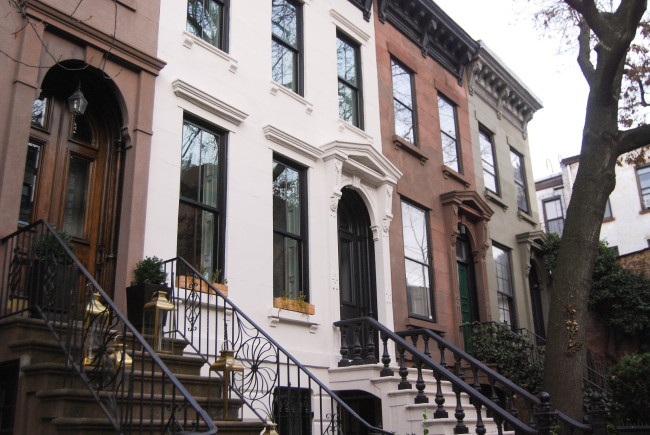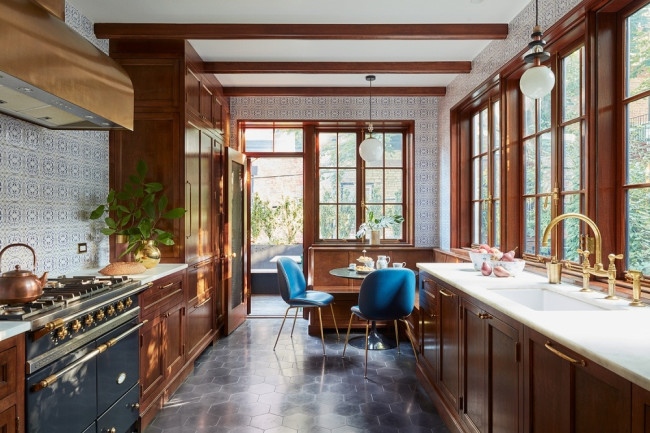Brownstones, townhouses, and rowhouses—what are the differences?

There is some overlap in these terms but also some subtle differences.
iStock
The terms brownstone, townhouse and rowhouse are often used interchangeably in New York City, and although there is overlap, there are also some subtle differences you should know about when you are house hunting.
Here's how to tell them apart: A townhouse is a multi-story urban house, attached or detached and scaled similarly to surrounding houses. A rowhouse is generally attached and built in a style that matches its neighbors. Lastly, a brownstone can be a townhouse or rowhouse, and the facade is a brown sandstone. Each type of building is distinct but they can also vary both in architectural design and the materials used.
A brownstone is brown—mostly
A brownstone is simply a style of townhouse or rowhouse with a reddish-brown sandstone facade says Ruoyu Wei, an architect with Steven Holl Architects. He points out the brownstone was "popularly used as a building material in the 19th century." The stone was easy to come by and supplied from east coast quarries.
Brownstones are clad in sandstone but their structures are made of bricks. (For a deeper dive into all things brownstone, check out Brick Underground's "7 facts you probably don't know about NYC's beloved brownstones.")
Some brownstones are rowhouses and some brownstones are townhouses. The term townhouse encompasses them all. And since every rule is made to be broken, it is possible to find a brownstone painted a different color or boldly modernized. If you're curious, read "Is 'whitestone' the new trend in Brownstone Brooklyn?"
A rowhouse is more uniform
A rowhouse is a type of townhouse, but not all townhouses are rowhouses. It sounds like a riddle but "rowhouses line a street in a row, whereas townhouses may be grouped in different compositions," says Wei. A rowhouse might also be a brownstone. Wei says rowhouses are the dominant building type of building in New York City’s historic districts. "Many were built between 1800 and 1925 to house a growing middle class," he says.
A townhouse is the broadest term
The townhouse originated in Europe, says Wei. "A townhouse was the city residence of a noble or wealthy family and was usually terraced. These days, a townhouse is generally defined as a single-family residence with at least two floors and a shared wall with another house," he says.
Whereas a rowhouse will be similar to its neighbors in design and building material, a townhouse, though similarly scaled, may be of a different design from its neighbors. "In popular usage, a rowhouse is generally less fancy than a townhouse," says Wei.
You Might Also Like




























